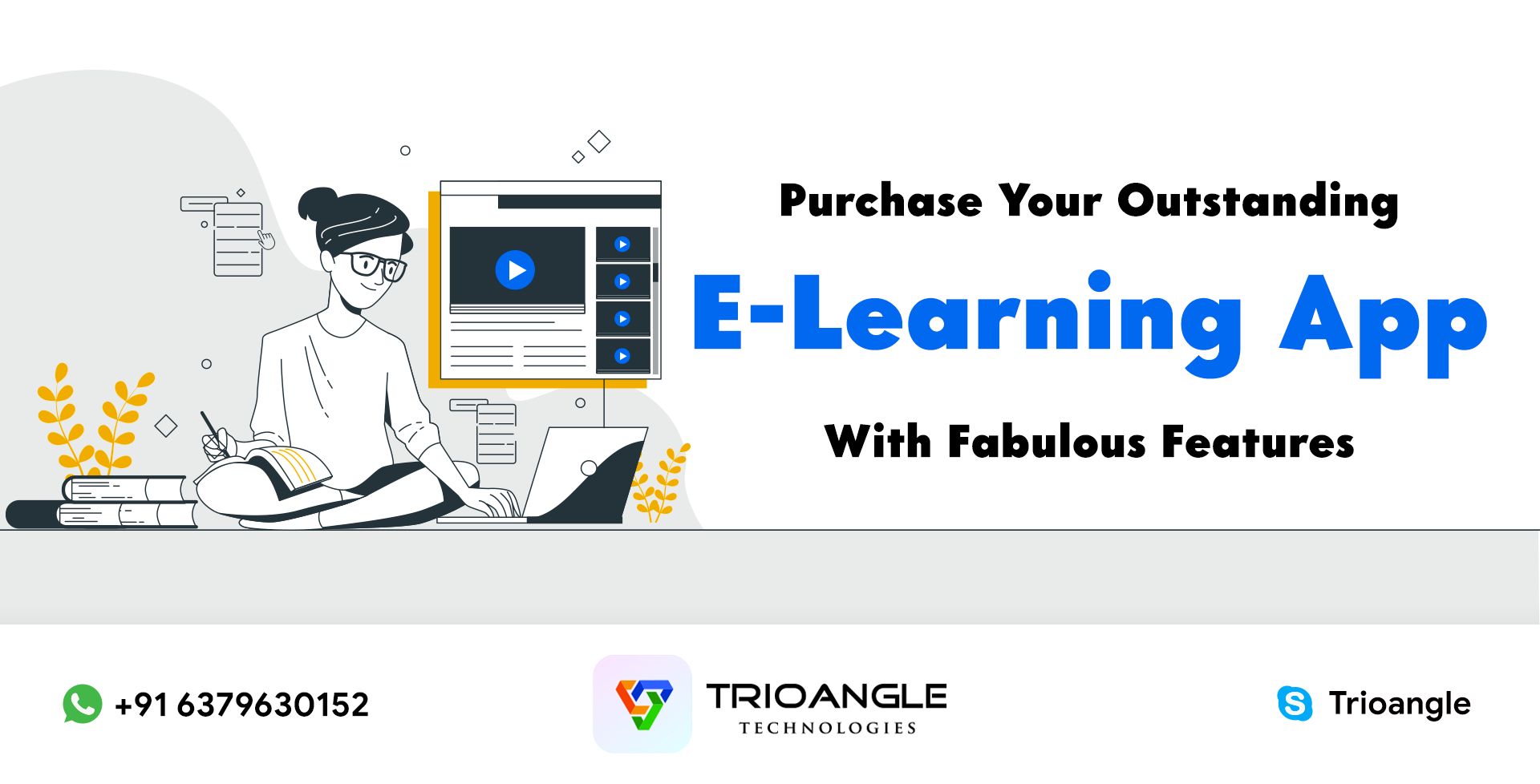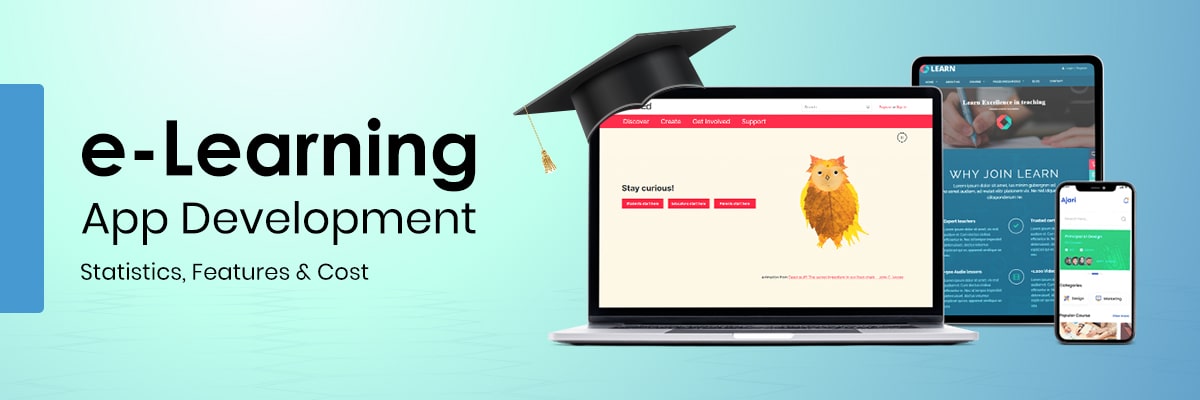1. Introduction
- What is eLearning?
- Importance of eLearning Platforms
- Purpose of the Article
2. Understanding eLearning Platforms
- Definition and Overview
- Key Features of eLearning Platforms
3. Benefits of eLearning Platforms
- Flexibility and Accessibility
- Cost-Effectiveness
- Personalized Learning Experiences
- Scalability
4. Types of eLearning Platforms
- Learning Management Systems (LMS)
- Massive Open Online Courses (MOOCs)
- Custom eLearning Solutions
5. Essential Features for a Successful eLearning Platform
- User-Friendly Interface
- Content Management System (CMS)
- Mobile Compatibility
- Interactive Elements
- Assessment and Reporting Tools
- Integration Capabilities
6. Steps to Develop an eLearning Platform
- Market Research and Planning
- Define Your Target Audience
- Select the Right Technology Stack
- Design and User Experience (UX)
- Develop Core Features
- Testing and Quality Assurance
- Launch and Marketing
7. Choosing the Right eLearning App Builder
- Overview of eLearning App Builders
- Criteria for Selecting an eLearning App Builder
- Top eLearning App Builders in the Market
8. Cost Considerations
- Budget Planning
- Hidden Costs to Watch Out For
- Cost-Benefit Analysis
9. Monetization Strategies for eLearning Platforms
- Subscription Models
- Pay-Per-Course
- Advertisements
- Partnerships and Sponsorships
10. Challenges in Developing eLearning Platforms
- Technical Challenges
- Content Creation
- User Engagement
- Data Security and Privacy
11. Best Practices for eLearning Platform Development
- Keeping the User in Mind
- Regular Updates and Maintenance
- Gathering and Implementing Feedback
- Staying Updated with Trends
12. Case Studies of Successful eLearning Platforms
- Example 1: Coursera
- Example 2: Udemy
- Example 3: Khan Academy
13. Future Trends in eLearning
- Artificial Intelligence and Machine Learning
- Virtual and Augmented Reality
- Gamification
- Microlearning
14. Conclusion
- Summary of Key Points
- Final Thoughts on Developing an eLearning Platform
15. FAQs
- How long does it take to develop an eLearning platform?
- What are the key challenges in maintaining an eLearning platform?
- Can small businesses benefit from eLearning platforms?
- How to ensure the security of an eLearning platform?
- What future trends should we watch in eLearning?
What if you could learn anything, anytime, anywhere? Welcome to the world of eLearning! eLearning platforms have revolutionized education by making knowledge accessible to everyone with an internet connection. This article will guide you through the journey of developing an eLearning platform, from understanding its essence to choosing the right tools and overcoming challenges.
Understanding eLearning Platforms
Definition and Overview
An eLearning platform is a digital space where educational content is delivered, managed, and accessed. Think of it as a virtual classroom, offering a range of courses, interactive tools, and resources to facilitate learning.
Key Features of eLearning Platforms
To stand out, an eLearning platform should have:
- User-Friendly Interface: Easy navigation for users of all tech-savviness.
- Content Management System (CMS): For organizing and delivering content.
- Mobile Compatibility: Learning on the go.
- Interactive Elements: Quizzes, discussions, and multimedia content.
- Assessment and Reporting Tools: Track progress and performance.
- Integration Capabilities: Sync with other tools and platforms.
Benefits of eLearning Platforms
Flexibility and Accessibility
No more rigid schedules. Learn at your own pace, whenever and wherever you want.
Cost-Effectiveness
eLearning cuts down costs on physical materials and commuting. It's a win-win!
Personalized Learning Experiences
Tailor courses to fit individual learning styles and needs.
Scalability
Whether you have 10 or 10,000 users, an eLearning platform can grow with you.
Types of eLearning Platforms
Learning Management Systems (LMS)
LMS platforms like Moodle or Blackboard manage and deliver educational content while tracking learner progress.
Massive Open Online Courses (MOOCs)
Platforms like Coursera and edX offer a wide array of courses from various institutions worldwide.
Custom eLearning Solutions
Tailored platforms designed to meet specific educational needs and objectives.
Essential Features for a Successful eLearning Platform
User-Friendly Interface
Simplicity is key. An intuitive design ensures that users can navigate the platform effortlessly.
Content Management System (CMS)
A robust CMS helps in creating, storing, and managing content efficiently.
Mobile Compatibility
Responsive design ensures that the platform works seamlessly across all devices.
Interactive Elements
Engagement tools like quizzes, forums, and multimedia content keep learners involved.
Assessment and Reporting Tools
Monitor learner progress with tests, quizzes, and detailed reports.
Integration Capabilities
Ability to integrate with other software and tools for a cohesive learning experience.
Steps to Develop an eLearning Platform
Market Research and Planning
Understand the market, identify your niche, and plan your platform accordingly.
Define Your Target Audience
Who are you designing for? Knowing your audience helps in creating relevant content.
Select the Right Technology Stack
Choose the technologies that will power your platform. This includes programming languages, frameworks, and databases.
Design and User Experience (UX)

Focus on creating an engaging and user-friendly design.
Develop Core Features
Start with essential features like user registration, course management, and content delivery.
Testing and Quality Assurance
Test rigorously to ensure a smooth, bug-free user experience.
Launch and Marketing
Deploy your platform and market it to attract users.
Choosing the Right eLearning App Builder
Overview of eLearning App Builders
eLearning app builders like LearnWorlds, Thinkific, and Teachable provide tools to create and manage your platform without extensive coding.
Criteria for Selecting an eLearning App Builder
- Ease of Use: User-friendly interface and tools.
- Customization: Ability to tailor the platform to your needs.
- Support and Resources: Availability of support and learning resources.
- Cost: Affordable pricing plans.
Top eLearning App Builders in the Market
- LearnWorlds: Known for its interactive features.
- Thinkific: Offers a range of customization options.
- Teachable: User-friendly with excellent customer support.
Cost Considerations
Budget Planning
Outline your budget, considering development, maintenance, and marketing costs.
Hidden Costs to Watch Out For
Be aware of additional expenses like software licenses, hosting fees, and third-party integrations.
Cost-Benefit Analysis
Weigh the costs against the potential benefits to ensure a profitable venture.
Monetization Strategies for eLearning Platforms
Subscription Models
Charge users a recurring fee for access to the platform.
Pay-Per-Course
Offer individual courses for a one-time fee.
Advertisements
Monetize through ads placed within the platform.
Partnerships and Sponsorships
Collaborate with other businesses for sponsorship opportunities.
Challenges in Developing eLearning Platforms
Technical Challenges
From ensuring compatibility across devices to maintaining high security, technical hurdles are plenty.
Content Creation
Creating engaging, high-quality content requires time and expertise.
User Engagement
Keeping users motivated and engaged is crucial for success.
Data Security and Privacy
Protecting user data is paramount, necessitating robust security measures.
Best Practices for eLearning Platform Development
Keeping the User in Mind
Always prioritize the user experience in your design and content.
Regular Updates and Maintenance
Continuously improve the platform based on user feedback and technological advancements.
Gathering and Implementing Feedback
Actively seek user feedback and implement necessary changes.
Staying Updated with Trends
Keep up with the latest trends in eLearning to stay competitive.
Case Studies of Successful eLearning Platforms
Example 1: Coursera
Coursera offers courses from top universities, making education accessible worldwide.
Example 2: Udemy
Udemy provides a platform for experts to create and sell courses on a variety of topics.
Example 3: Khan Academy
Khan Academy offers free educational content, focusing on school-level subjects.

Future Trends in eLearning
Artificial Intelligence and Machine Learning
AI can personalize learning experiences and provide insights into learner behavior.
Virtual and Augmented Reality
VR and AR offer immersive learning experiences, particularly in fields requiring practical skills.
Gamification
Incorporating game elements can boost engagement and motivation.
Microlearning
Short, focused learning modules cater to the modern learner's preference for bite-sized information.
Conclusion
Developing an eLearning platform is a multifaceted process that involves careful planning, design, and execution. By focusing on user needs, leveraging the right tools, and staying updated with industry trends, you can create a successful
and engaging eLearning platform.
FAQs
How long does it take to develop an eLearning platform?
The development time can vary widely based on the complexity of the platform and the resources available. On average, it can take anywhere from six months to a year.
What are the key challenges in maintaining an eLearning platform?
Key challenges include keeping content up-to-date, ensuring data security, and continuously improving user engagement.
Can small businesses benefit from eLearning platforms?
Absolutely! eLearning platforms can offer cost-effective training and development solutions for small businesses.
How to ensure the security of an eLearning platform?
Implement robust security measures such as encryption, secure login protocols, and regular security audits.
What future trends should we watch in eLearning?





